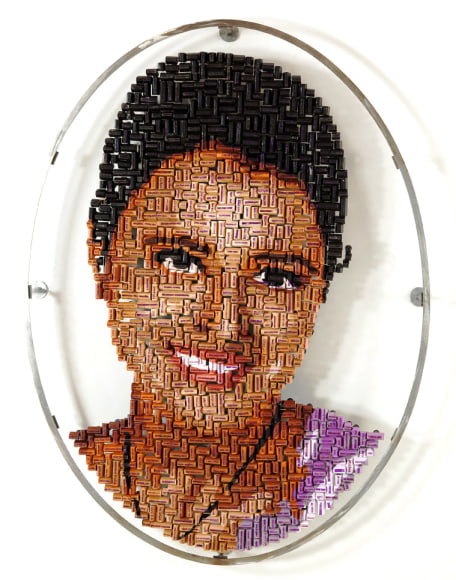“Who knows what you said...? Who knows what I heard? Some thing stirred in my heart.”
.........is an excerpt from the lyrics of a song featured in the seminal film, Pyaasa, written by the legendary actor and film director Guru Dutt. In these few words, a brief exchange occurs that encapsulates the premise of this exhibition - the desire to know and be touched by what is known and felt by someone else.
The two artists in this exhibition, Reena Kallat and Sara Rahbar, live on different continents, Asia and North America, or sometimes on the same one, namely Asia (India and Iran), from where their observations about the nature of power as it effects belonging informs their individual practices.
Their work speaks about concerns and caution, in a time when power re-infects those already weakened by how it has been nurtured in a post-global society, of absolutes that have made our world spiral into an existential meltdown with the gradual erosion of rights and mobility; - a set of conditions that is leading to an increment in the condition of subalternity. This subaltern status, that results from the rise of neo-liberalist cosmopolitanism and a hegemonic globalization, has disturbed fragile states and complicates economic relationships along gender, tribal, ethnic and racial lines.
The work that Kallat has been producing can be seen as part of a growing realization in the picturing of the victims of post-global reality. The recent and sudden drop in status of many people from certain regions of India, Pakistan and Bangladesh, who were dependent on patterns of mass migration for their economic survival, has come to provide a vivid portrayal of the victims of the contemporary haste to build and the shadows remaining in the reversal of this trend. Like a rudderless raft by the wayside of international abandon, these courageous souls, who had trawled their way through multitudes of notary agents and officialdom to win over the processes of bureaucracy, are now abandoned in a no-mans land. Here between economies and between national recessions, they exist virtually, on paper and by symbolic agreements that no longer can be afforded.
Sara Rahbar’s Those expectations for sunshine is a series of tightly arranged material, which is highly suggestive in its mixed provenance, making the audience react instantly to its redolent references of today’s regrets and future’s fears.
The title, Those expectations for sunshine, already proposes such a prospect but it is in the correlation and co- relatedness of the prints and their signifiers that one starts to unravel the meaning of what is implied. An old Afghan coat reveals its inner lining to be sewn from an American flag and a set of the Islamic Republic of Iran’s flag droops in a post-coital fashion from a set of old wooden pulleys. This set of flags and garments are foundational sources, which have, over a period of time, come to represent specific and contrary historical accounts. In viewing them together, a unique set of values springs forth in an assembly of suspiring images.






















